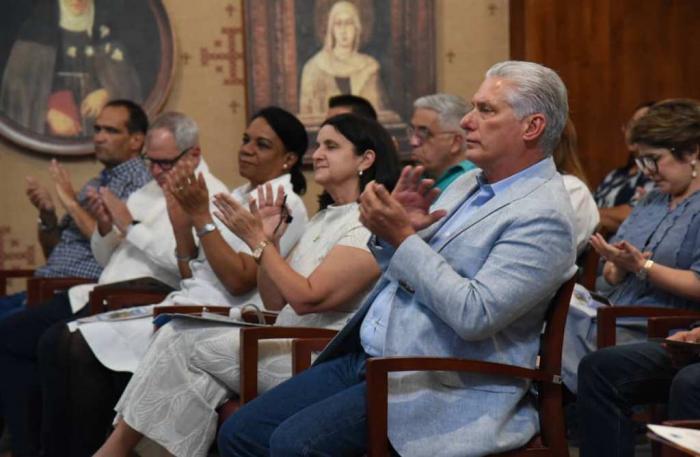
As a space for training and creative conservation to contribute to the transformation of the community from different cultural and social innovation approaches, in addition to weaving collaborative networks for the arts, the former Convent of Santa Clara reopened its doors as a center of higher education, after completing the first phase of its restoration and the Aula Magna.
The First Secretary of the Central Committee of the Party and President of the Republic, Miguel Díaz-Canel Bermúdez, attended the inauguration of the college, which was according to Eusebio Leal Spengler, main supporter for its repair and eternal historian of Cuba, “the most beautiful and ancient female Catholic Convent in Havana”, and now will serve “as a center for the formation of the arts and crafts of the restoration of Cuba and the Caribbean”.
The academy will welcome -starting in November- professionals between 18 and 35 years of age; and the program will include courses in conjunction with the National Institute of Design, the San Geronimo College and the University of the Arts.
Director of the Santa Clara Colledge Gladys Collazo Usallán said that the agreements include teacher mobility, research projects, internships, study internships, international events and other academic offerings.
The challenges include, she added, the commitment to make the college a reference for Latin America, “in favor of the heritage that identifies us as a people,” as well as the aspiration of Eusebio Leal: a space that radiates options for culture and empowerment.
The meeting was attended by Deputy Prime Minister Inés María Chapman Waugh, Secretary of the National Assembly of People's Power Homero Acosta Álvarez, First Secretary of the Provincial Committee of the Party in the capital Liván Izquierdo Alonso, in addition to other leaders of the Cuban Party, State and Government, members of the diplomatic corps and representatives of the United Nations and the European Union.
This project has the financial collaboration of the European Union, through the United Nations Educational, Scientific and Cultural Organization, within the framework of the Transcultura program, among other contributing entities.















